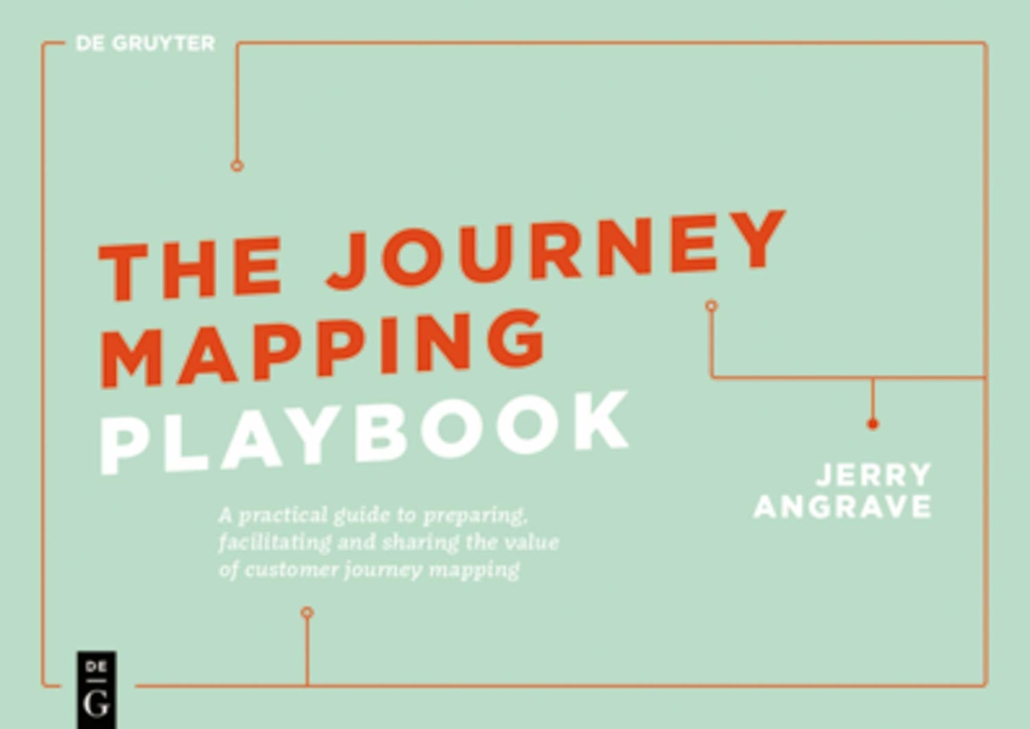
As an avid reader dedicated to continually expanding my professional knowledge, I’m always interested in new books relating to customer experience. This is doubly true for the topic of journey mapping, since I contributed to one of the early books on the subject (Mapping Experiences by Jim Kalbach) and co-wrote a comprehensive guidebook (How Hard Is It to Be Your Customer? Using Journey Mapping to Drive Customer-Focused Change).
So I eagerly dug into Jerry Angrave’s new book, The Journey Mapping Playbook. Here’s what I found: it’s easy to read, is full of great information about setting up a journey mapping workshop…and it provides all the tips and tools you need to create really unfortunate outcomes for your business.
Does that sound too harsh? Let me explain my position.
There are two general ways to do journey mapping:
Angrave’s book is solidly in the first camp. But that method just. doesn’t. work.
You can’t create a customer journey map when customers are afterthoughts. The data is absolutely clear on this. (See below for our own research.)
Like most who subscribe to this second philosophy, Heart of the Customer’s journey mapping teams begin by asking employees about their perceptions of the customer journey. (Actually, we do quite a bit of work before that step in the process, but you know what I mean.)
We’re clear from the start that this isn’t the source of truth, and further differentiate it by calling this workshop “Hypothesis Mapping.” Similar to Angrave’s approach, we identify personas and break participants into small teams to tell us what they think the journey is like. But unlike Angrave’s method, we never share those hypotheses with customers. That would anchor customers around the employees’ view of the journey, rather than the other way around.
Instead, we start with a blank slate and ask customers what the journey is like. Then we compare the results to what employees said and focus on the differences.
Multiple studies have shown the power of anchoring. Human beings can’t ignore what’s in front of them, whether it’s a journey map or a random number. If you begin by showing them your hypotheses, they’ll react and probably give some guidance…but they won’t tell you where you’ve missed the mark.
Let’s use an example from my book: ABC Software Company, which provides solutions to banks.
They wanted us to map the pre-sales and sales journey. This work was inspired by work from the CEB (now part of Gartner) that showed that 57% of the B2B sales journey happened before a sales rep was involved, primarily using digital resources. ABC wanted to know what customers were doing, so they could create the right digital assets to win sales.
The Hypothesis Mapping followed, with participants imagining white paper reviews, feature comparisons, and demo requests as key parts to the journey. We documented this, then set it aside.
Then we interviewed customers with an open-ended discussion guide, asking them how they determined that they needed new software, and how they went about choosing a vendor.
What we discovered was that, yes, they did all those digital things. But before they did any of that, they talked to another banker.
Bankers know that if they choose the wrong software, it will kill their business. With so much on the line, they look to other bankers to find out who they can trust. They rely on this social proof to winnow down the list to a select few. Then they go online…but their digital research focuses only on their “finalists.”
Had we followed Angrave’s approach, we would have “determined” that the journey is truly digital. And therefore, that would be where ABC would direct its efforts and resources.
But they would never have discovered the importance of the analog conversation bankers have.
Even if the software company went out to “validate” their results with customers, if they anchored those customers with an existing map, the conversation wouldn’t cover all the things the customers did before the digital aspect of the journey even began…including eliminating software companies other bankers hadn’t mentioned or recommended.
They would have missed out on a killer opportunity to grow their business, and wasted time and money by focusing on digital resources that potential buyers might never even seek out, if by the time they went online they had already eliminated the company from consideration.
Another example is a healthcare provider that asked us to map their advanced radiology journey. They hypothesized that scheduling was the big pain point, and this was reflected both in stakeholder interviews and the Hypothesis Mapping.
Had we used Angrave’s “mapping in a workshop with just employees” approach, we would have identified all the improvements that needed to be made with online scheduling. Even if we had checked with patients, by the time their results came back, we would have missed the mark.
But by starting with hypotheses, talking to customers, then getting back together to discuss results, we were able to show that the current scheduling process wasn’t a big problem. It was the silo mentality of the health system. That’s something unlikely to come up in the workshop approach!
We went back and analyzed a bunch of our projects to see how close organizations got in Hypothesis Mapping to what we ultimately determined matters most to customers.
We found that the hypothesized steps are mostly correct. Companies typically have a good idea of what customers do, especially when it entails direct contact.
But where they’re off base is emotions (which are critical to boosting loyalty), especially the key Moments of Truth. Those are the few interactions that have a disproportionate impact on the customer’s perception of the journey overall.
Curiously, I didn’t see Moments of Truth mentioned at all in The Journey Mapping Playbook, which is unfortunate. We dedicated an entire chapter to this concept.
But back to our research: When asked to identify which three interactions matter most to customers, on average, clients gave us 8.3. It’s not that our customers can’t count. It’s that each silo has its own idea of what is important to customers.
Worse, when we looked closer at the results, we found that even with all those extra hypothesized Moments of Truth, clients’ hypotheses still missed two-thirds of the key interactions that actually matter most to their customers.
Which means no matter how much they invest in initiatives, they’re unlikely to realize the results they seek. The ladder they’re climbing is propped against the wrong wall.
Angrave clearly spent a lot of time on his approach, and his guide includes a lot of good tips to make sure your mapping workshop is a fun event.
But don’t be fooled into thinking that your employees, on their own, can provide a clear picture of the customer journey. You will be better served by using the workshop as a change management tool.
Get employees to commit to what they think the journey looks like. Then ask customers their perceptions in an open-ended way. Comparing the results from these two groups and identifying the gaps – use lots of videos! – will go further toward improving your customer experience than any employee workshop ever could.

